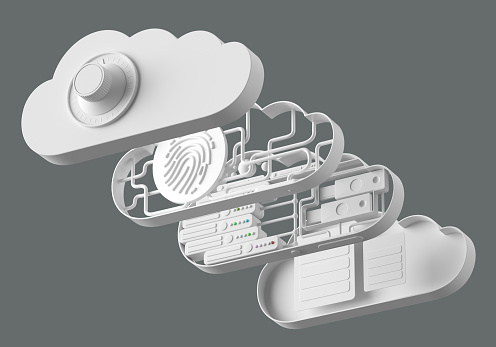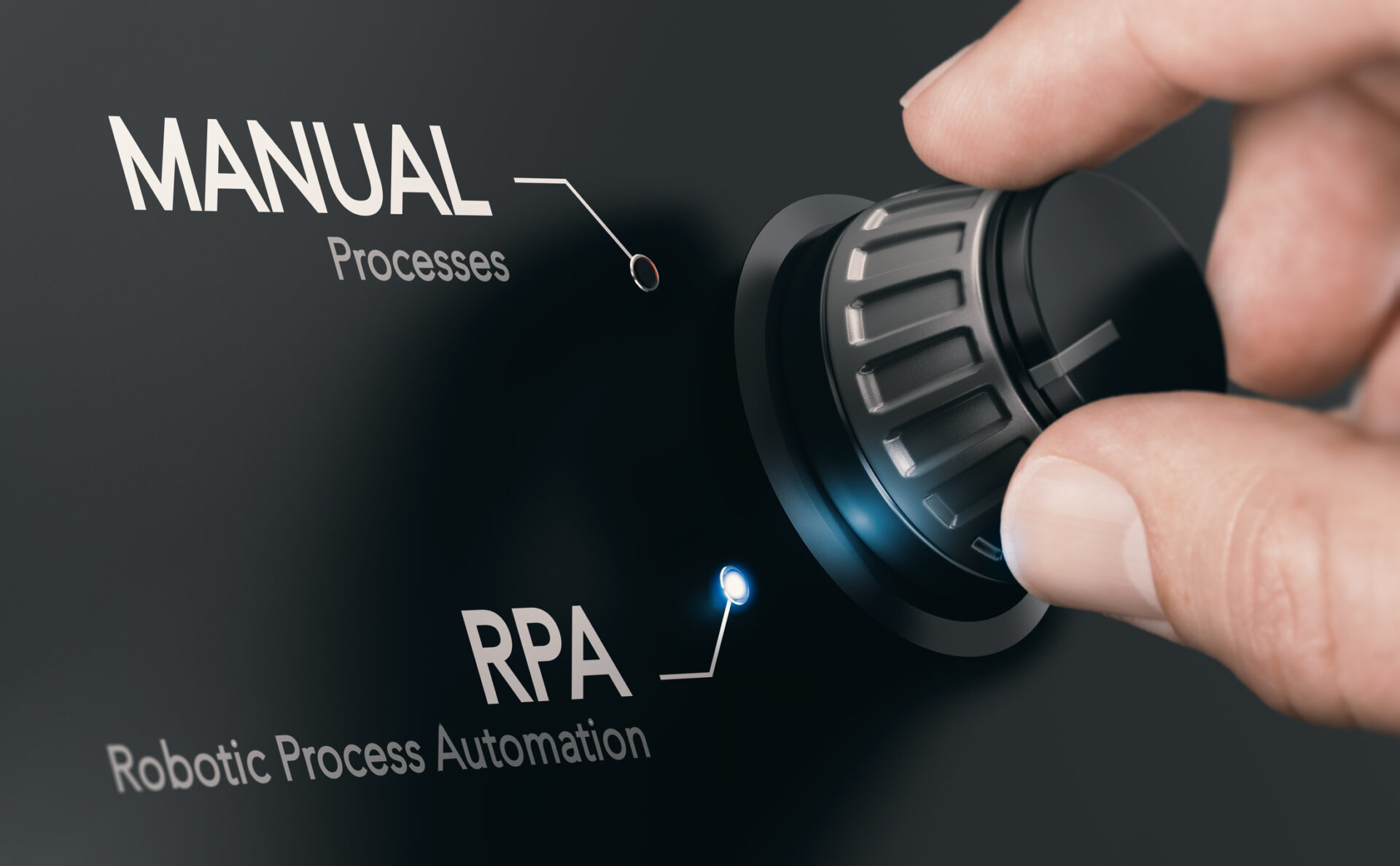 The recent announcement from IBM to withdraw from all research, development, and offerings of facial recognition will not stop facial recognition from being used by law enforcement or government entities. There. I said it. Facial recognition will continue on its gray area trajectory with or without IBM. But what IBM has done, specifically Arvind Krishna, is bringing attention to a growing concern that needs far more national and global attention. The use of facial recognition needs to be scrutinized for bias and privacy concerns. It needs oversight. It needs guardrails. Usage, especially from law enforcement and governing entities, needs to be transparent. And frankly, the technology needs to be better for it to work the way people envision.
The recent announcement from IBM to withdraw from all research, development, and offerings of facial recognition will not stop facial recognition from being used by law enforcement or government entities. There. I said it. Facial recognition will continue on its gray area trajectory with or without IBM. But what IBM has done, specifically Arvind Krishna, is bringing attention to a growing concern that needs far more national and global attention. The use of facial recognition needs to be scrutinized for bias and privacy concerns. It needs oversight. It needs guardrails. Usage, especially from law enforcement and governing entities, needs to be transparent. And frankly, the technology needs to be better for it to work the way people envision.
Insight
-
-
It’s great to be back with the SOAPA video series, albeit in a remote format. Nevertheless, I was excited to interview Hugh Njemanze, CEO of Anomali, a leading threat intelligence platform (TIP). In part 2 of our video, Hugh and I yak about:
- The impact of COVID-19. Hugh agrees that the global pandemic has led to a steep increase in cybercrime activity. Anomali researchers are closely following this, curating COVID-19 specific threat intelligence, and sharing it with customers and the general public.
- Security operations technology integration. Back to SOAPA, I mention to Hugh that ESG research indicates that 84% of enterprise organizations are active or somewhat active with security operations technology integration. Anomali sees similar trends and is often integrated with security technologies like SIEM, SOAR, and NGFWs, adding the right threat intelligence for security analysis and process automation.
- Security operations in the cloud. ESG research says that 58% of organizations prefer to purchase or are willing to purchase cloud-based security operations technologies. That’s fine with cloud-native Anomali. In the early days, Anomali assumed the role of cloud evangelist but Hugh says that SaaS-based TIPs are now mainstream. With the influence of the pandemic, threat intelligence SaaS platforms like Anomali will only gain momentum.
- The future of security operations. Hugh believes SOAPA has a bright future, driven by the need for more integration, automation, and analytics. Security operations technologies will get simpler and more powerful.
Many thanks to Hugh and Anomali for participating in the SOAPA video series! Look for more videos soon.
-
 It’s not surprising that IT is getting more complicated. Digital transformation initiatives are proliferating across industries, and building out hybrid and multi-cloud environments is gaining traction. The need for speed is essential—especially when it comes to networking.
It’s not surprising that IT is getting more complicated. Digital transformation initiatives are proliferating across industries, and building out hybrid and multi-cloud environments is gaining traction. The need for speed is essential—especially when it comes to networking. With this in mind, Cisco and Google recently announced their joint turnkey networking solution—Cisco SD-WAN Hub with Google Cloud. Google Cloud is providing hybrid and multi-cloud services, connectivity and security solutions, and Cisco SD-WAN solutions are offering single pane-of-glass SD-WAN management and secure connectivity to the cloud, streamlining operations by automating routine tasks.
-
Cisco and Google Cloud recently announced Cisco SD-WAN Cloud Hub with Google Cloud, a new collaborative turnkey networking solution. Cisco’s SD-WAN capabilities (policy, security, and telemetry) merged with Google Cloud’s software-defined backbone offer organizations an effective means to ensure that security and compliance policies—as well as application service-level objectives (SLOs)—can easily extend across the network. The solution offers organizations a comprehensive way to view the end-to-end network, providing secure on-demand connectivity from customer locations, through Google Cloud’s backbone, as well as applications running in Google Cloud, other clouds, private data centers, or SaaS applications.
-

The COVID-19 pandemic has severely hindered our ability, whether as analysts or as IT vendors, to engage with our peers, partners, and customers. And few places represent this shift in the rules of customer engagement more than the current hiatus of large, in-person customer and partner events.
The big events are gone–so too are the spectacle of the keynotes, the famous speakers, the meet and greets, the live demos, and the tchotchkes. Those poor, poor tchotchkes. Will no one think of the tchotchkes?
Business, though, like life, finds a way. And that way is in the form of online digital events, which have so far produced mixed results, though often better than expected given the circumstances. After attending a few of these events, I pulled together a few thoughts, critiques, and recommendations from my peers here at ESG, as well as a few of my own, on what works, as well as less-effective features for digital events thus far. It all comes down to two simple rules:
1. Entertain and Engage as well as Inform
The experience of a massive, in-person event produces a certain level of grandeur. The shift to a digital format loses much of that. When building content, assume that it must be significantly more exciting and engaging than it would have needed to be for in-person presentation. Some components of presentations that increase viewer engagement include:
- Fewer, more powerful messages. Every product person wants their chance to shine, but focus on the big-ticket items: the major, transformational advances. It’s better to save the incremental updates for another day.
- Zero buffering (or viewers will change tabs). If a technology firm’s keynote buffers, viewers will assume the firm doesn’t have the best or latest technology.
- Shorter more, engaging content. Attention is easier to hold in person. Digital content must be clear and concise—less is more. But make it easy for viewers who want to learn more to access additional short content.
- More conversations, fewer scripts. In a similar fashion, conversations draw greater interest. Viewers have short attention spans, which get shorter when the host is reading from a script.
- Exceptional quality for prerecorded events. Leverage graphics, dynamic content, and other elements that entertain while getting the point across.
2. Assume No One Is Entertained or Engaged
Building engaging content is important, but remember that the environment has changed. Audiences are likely trying to work from home while juggling their personal lives in the process. For example, you may be tuning out the noise of other people in your household while reading this blog. Chances are good that viewers are multitasking, too, so presenters must:
- Make content easy to identify and find. Assume that everyone will need to watch a presentation more than once to understand the topic and make it easy for them to come back and find what they want when interruptions occur.
- Include multi-type, snackable content. Don’t make the audience watch an hour-long keynote just to find the five-minute demo for the new technology they want to see. Divide content into specific topics with easily watchable and rewatchable pieces.
- Make materials sharable. Digital content can increase the size of the potential audience, so help attendees share content with their peers.
- Work toward persona-based content. CIOs, security professionals, IT admins, and developers all have different questions. Help them find specific answers.
- Create “rolling thunder.” Participants likely didn’t get the full message the first time, or the second; remind them, and follow up with added content, experiences, feedback, and commentary on an ongoing basis after the event.
Bottom line is that digital engagement is different, but that does not mean it has to be less effective. Remember you will not have your audience’s undivided attention, so you must do more to grab that attention, hold on to it, and then remind them when that attention becomes lost.
-
 Yesterday, NetApp announced that it has entered into an agreement to acquire Spot. While acquisitions are difficult to evaluate since the hard work really doesn’t begin until after the integration work is complete, I am finding it difficult to contain my excitement.
Yesterday, NetApp announced that it has entered into an agreement to acquire Spot. While acquisitions are difficult to evaluate since the hard work really doesn’t begin until after the integration work is complete, I am finding it difficult to contain my excitement.Spot is one of the more interesting young innovators in IT and its technology addresses a massive need in the industry. The firm has several different offerings but, in essence, Spot’s technology is about enabling its customers to achieve an application-driven infrastructure, where the technology provides tools that understand workload patterns, then provide visibility into those patterns, enabling more efficient use of infrastructure and automation. Spot understands how your applications leverage infrastructure including public cloud infrastructure, so you don’t have to.
-
 Pandemic? What pandemic? Last week, Pure Storage announced their first quarter fiscal 2020 financial results boasting a 12% revenue increase over last year. This revenue jump offered one of the few bright spots in a week that saw a flurry of less than positive financial news about multiple IT technology providers. Pure’s results also offer a reminder that business must go on even when a pandemic limits how and where businesses can operate.
Pandemic? What pandemic? Last week, Pure Storage announced their first quarter fiscal 2020 financial results boasting a 12% revenue increase over last year. This revenue jump offered one of the few bright spots in a week that saw a flurry of less than positive financial news about multiple IT technology providers. Pure’s results also offer a reminder that business must go on even when a pandemic limits how and where businesses can operate. -
The SOAPA video series is back! In this global pandemic edition, I speak with Hugh Njemanze, CEO of Anomali, a leading threat intelligence platform (TIP). In part 1 of my chat with Hugh, we discuss:
- Security operations difficulties. Enterprise Strategy Group research indicates that 63% of organizations claim that security operations are more difficult than they were 2 years ago. Hugh agrees and believes these difficulties are related to the breadth of tools and practices that are creating visibility and process gaps.
- Issues around alert fatigue and keeping up with security threats. Hugh reminds me that security operations is a big data problem. The challenge is to find threat intelligence insights and share this data with systems of record like SIEM and SOAR. This level of integration can bolster efficiency.
- Operationalizing threat intelligence. I hear this requirement often, so I ask Hugh what the term means to him. Hugh responds that organizations must make better use of threat intel trigger alerts that can help organizations capture the right data and take immediate actions.
- Skills requirements for threat intelligence analysis. Not everyone can hire an ex-intelligence analyst so I ask Hugh how Anomali customers can get continuous value out of their TIP. Hugh described how Anomali Lens “reads” intelligence reports and highlights important details about adversary tactics, techniques, and procedures (TTPs) and indicator of compromise (IoCs). Furthermore, Anomali Match can then be used to compare threat indicators to historical network data. In other words, Anomali applies machine intelligence to help human beings interpret and act upon threat intelligence.
In my humble opinion, TIPs like Anomali are an undervalued but integral part of strong security operations. Thanks to Anomali and Hugh for participating in the ESG SOAPA video series, stay tuned for part 2.
-
 In addition to reporting very strong growth in its fiscal third quarter, Zscaler announced the completed acquisition of Edgewise Networks last week. At a price tag of $31 million, this won’t be a deal that turns many heads, but maybe it should. We’ve seen much of the industry shift to a cloud-delivered network security approach over the last 10 months, something ESG calls elastic cloud gateways (ECGs). In many ways, this is the logical evolution of the approach Zscaler introduced more than 10 years ago. However, the Edgewise Networks deal, along with the recent acquisition of cloud security posture management (CSPM) vendor Cloudneeti show that Zscaler is beginning to think beyond just user access and toward a broader approach to cloud security overall. Specifically, the addition of Edgewise Networks strengthens Zscaler’s zero-trust capabilities to address not only the workforce, but also applications and workloads.
In addition to reporting very strong growth in its fiscal third quarter, Zscaler announced the completed acquisition of Edgewise Networks last week. At a price tag of $31 million, this won’t be a deal that turns many heads, but maybe it should. We’ve seen much of the industry shift to a cloud-delivered network security approach over the last 10 months, something ESG calls elastic cloud gateways (ECGs). In many ways, this is the logical evolution of the approach Zscaler introduced more than 10 years ago. However, the Edgewise Networks deal, along with the recent acquisition of cloud security posture management (CSPM) vendor Cloudneeti show that Zscaler is beginning to think beyond just user access and toward a broader approach to cloud security overall. Specifically, the addition of Edgewise Networks strengthens Zscaler’s zero-trust capabilities to address not only the workforce, but also applications and workloads.Edgewise certainly covers the essential capabilities for microsegmentation. Recent ESG research asked respondents for the most important attributes in a microsegmentation solution. The top factor cited by 42% of respondents was the ability to identify and map the traffic and relationships between workloads, applications, and other entities. Also of high importance is support across multiple deployment models (i.e., data center, public cloud, and containers), which was cited by 39% of respondents. Edgewise has both these bases covered.
However, Edgewise provides an interesting take on these typical approaches to microsegmentation by adding a layer of identity authentication between applications or services. This, as well as some of the machine learning capabilities Edgewise brings to the table, could see interesting uses within Zscaler’s current zero-trust access solutions over time. Better visibility into user application access patterns, built-in identity validation, and the machine learning engine itself could all enhance Zscaler’s Private Access offering.
One challenge Zscaler will face is getting this in front of the right people. The ownership for microsegmentation solutions remains fractured, with IT ops, SecOps, DevOps and application development, and the network security teams all potentially having input depending on the organization. Zscaler’s C-level focus should help here, as will providing solutions supporting a more well-rounded zero-trust approach. However, building DevOps credibility will be paramount.
These recent tuck-in acquisitions have potential upside with limited risk due to the small acquisition costs. We expect to see cloud adoption continue to accelerate as organizations look for increased flexibility, agility, and cost-savings due to the impact from COVID-19. Microsegmentation capabilities to support a zero-trust approach and CSPM are two areas of security sure to benefit from the increased focus.
-
 Over the last several months, automation has seen a jump in interest. Operational efficiency has been a top priority for years, but as of late, it’s an even greater priority. For businesses, tasks or processes that used to be viewed as manageable but inefficient are now being scrutinized. The inefficiency aspect is being amplified and organizations don’t have a choice but to act. And one of those actions is to look into a trendy buzzword that is proving to be so much more: robotic process automation (RPA).
Over the last several months, automation has seen a jump in interest. Operational efficiency has been a top priority for years, but as of late, it’s an even greater priority. For businesses, tasks or processes that used to be viewed as manageable but inefficient are now being scrutinized. The inefficiency aspect is being amplified and organizations don’t have a choice but to act. And one of those actions is to look into a trendy buzzword that is proving to be so much more: robotic process automation (RPA).So first off, what is it? RPA uses software and advanced technology like AI and ML to automate repetitive processes that are traditionally performed by a human. A software bot is configured to mimic structured actions to rapidly interact and transmit data based on established business workflows.
We, as humans, require breaks. We have defined working hours. And whether we want to admit it or not, we’re predisposed to make a mistake here or there. This is especially true when executing a repetitive task over and over again. All it takes is a fat-finger typo entering information from a submitted form to create a ripple effect that could be catastrophic to a business or a customer.
While RPA bots don’t sleep, don’t stop, and (when programmed properly) don’t make mistakes, it’s easy to get lost in the potential of RPA. It’s important to not lose sight of what RPA is and isn’t. RPA is not a physical robot. It doesn’t think freely. It doesn’t have cognitive abilities. RPA does enable predictability and reliability in the time it takes to complete a task or execute a workflow from beginning to end. RPA does save humans countless hours completing mundane tasks, enabling them to focus on more important tasks and projects. RPA does improve operational and business process efficiency.
So where are organizations today in their adoption of RPA? Enterprise Strategy Group research shows that nearly 1/3rd of respondents report their organization currently utilizes bots in production environments to help automate tasks. But what is interesting is that when looking at this data based on level of digital transformation maturity, it shines a spotlight on the continued separation of the more digitally transformed businesses over their less digitally transformed peers. ESG recently published a research brief that highlights some of these key findings. It can be found here.
For more RPA info, stay tuned over the coming weeks as I’ll be doing a double click on the RPA market, as well as highlight best practices on how to get started.
-
ESG’s Master Survey Results provide the complete output of syndicated research surveys in graphical format. In addition to the data, these documents provide background information on the survey, including respondent profiles at an individual and organizational level. It is important to note that these documents do not contain analysis of the data.
This Master Survey Results presentation focuses on the technology impact of COVID-19 in terms of both enabling more employees to work from home and the impact on original 2020 IT budget levels, as well as expectations for how the remote work landscape may change.
-
ESG’s Master Survey Results provide the complete output of syndicated research surveys in graphical format. In addition to the data, these documents provide background information on the survey, including respondent profiles at an individual and organizational level. It is important to note that these documents do not contain analysis of the data.
This Master Survey Results presentation focuses on the experiences and changing work habits of corporate knowledge workers related to their current work from home (WFH) status resulting from the COVID-19 outbreak.

 It’s not surprising that IT is getting more complicated. Digital transformation initiatives are proliferating across industries, and building out hybrid and multi-cloud environments is gaining traction. The need for speed is essential—especially when it comes to networking.
It’s not surprising that IT is getting more complicated. Digital transformation initiatives are proliferating across industries, and building out hybrid and multi-cloud environments is gaining traction. The need for speed is essential—especially when it comes to networking. 
 Yesterday, NetApp
Yesterday, NetApp  Pandemic? What pandemic? Last week, Pure Storage
Pandemic? What pandemic? Last week, Pure Storage  In addition to reporting very strong growth in its fiscal third quarter, Zscaler announced the completed acquisition of Edgewise Networks last week. At a price tag of $31 million, this won’t be a deal that turns many heads, but maybe it should. We’ve seen much of the industry shift to a cloud-delivered network security approach over the last 10 months, something ESG calls elastic cloud gateways (ECGs). In many ways, this is the logical evolution of the approach Zscaler introduced more than 10 years ago. However, the Edgewise Networks deal, along with the recent acquisition of cloud security posture management (CSPM) vendor Cloudneeti show that Zscaler is beginning to think beyond just user access and toward a broader approach to cloud security overall. Specifically, the addition of Edgewise Networks strengthens Zscaler’s zero-trust capabilities to address not only the workforce, but also applications and workloads.
In addition to reporting very strong growth in its fiscal third quarter, Zscaler announced the completed acquisition of Edgewise Networks last week. At a price tag of $31 million, this won’t be a deal that turns many heads, but maybe it should. We’ve seen much of the industry shift to a cloud-delivered network security approach over the last 10 months, something ESG calls elastic cloud gateways (ECGs). In many ways, this is the logical evolution of the approach Zscaler introduced more than 10 years ago. However, the Edgewise Networks deal, along with the recent acquisition of cloud security posture management (CSPM) vendor Cloudneeti show that Zscaler is beginning to think beyond just user access and toward a broader approach to cloud security overall. Specifically, the addition of Edgewise Networks strengthens Zscaler’s zero-trust capabilities to address not only the workforce, but also applications and workloads. Over the last several months, automation has seen a jump in interest. Operational efficiency has been a top priority for years, but as of late, it’s an even greater priority. For businesses, tasks or processes that used to be viewed as manageable but inefficient are now being scrutinized. The inefficiency aspect is being amplified and organizations don’t have a choice but to act. And one of those actions is to look into a trendy buzzword that is proving to be so much more: robotic process automation (RPA).
Over the last several months, automation has seen a jump in interest. Operational efficiency has been a top priority for years, but as of late, it’s an even greater priority. For businesses, tasks or processes that used to be viewed as manageable but inefficient are now being scrutinized. The inefficiency aspect is being amplified and organizations don’t have a choice but to act. And one of those actions is to look into a trendy buzzword that is proving to be so much more: robotic process automation (RPA).